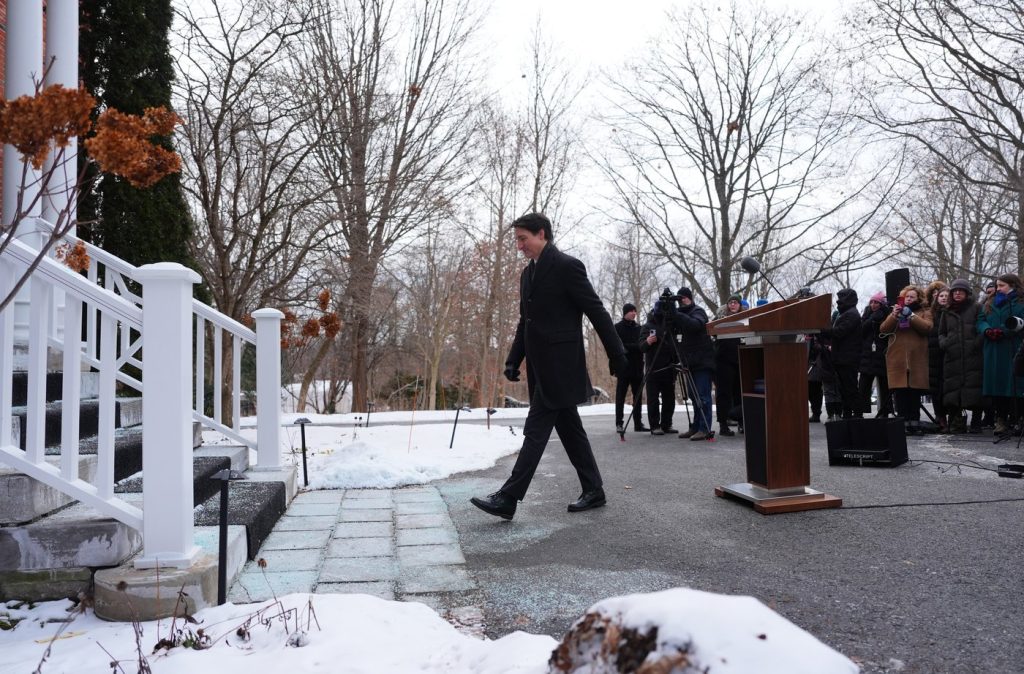Israel faces a fierce and evasive foe in Hezbollah’s drones

Posted Oct 14, 2024 01:03:14 PM.
Last Updated Oct 14, 2024 01:15:23 PM.
TEL AVIV, Israel (AP) — One of the worst mass casualty strikes on Israel in a year of war came not from dozens of Iranian ballistic missiles nor the repeated barrages of rocket fire launched by Hamas and Hezbollah. Instead, it was a single drone.
The unmanned aerial vehicle, laden with explosives, evaded Israel’s multilayered air-defense system and slammed into a mess hall at a military training camp deep inside Israel, killing four soldiers and wounding dozens.
It’s the latest achievement for Hezbollah’s drone fleet and has shined a light on Israel’s struggle over the past year of war to knock down unmanned aircraft incoming from as far away as Yemen, Iraq and Iran.
Over the years, Israel has built up its aerial defense array to provide broad protection against short-range rocket fire and medium- and long-range missiles, although experts caution it is not airtight. While the system has taken down drones repeatedly, many have penetrated Israel’s airspace and sidestepped its defenses, in some cases with deadly results.
The drone traversed Israeli airspace unimpeded
On Sunday evening, reports emerged of a mass casualty event about 65 kilometers (40 miles) from the Lebanese border. A drone had slammed into a mess hall filled with troops eating dinner, according to Israeli media, killing four soldiers and wounding 67 people.
Minutes earlier, air raid sirens had blared in northern Israel as the aircraft flew overhead. But no sirens sounded at the base, giving the soldiers no advance warning and indicating that the drone may have fallen off Israel’s radar.
An Israeli security official said Israel was still investigating how the drone made it through Israel’s air defenses. A pair of drones initially entered Israeli airspace, but while one was shot down, the other one continued to its target.
Hezbollah, which said the attack was in response to Israeli strikes in Lebanon, said the drone was “able to penetrate the Israeli air defense radars without being detected” and reach its target. It claimed it had outsmarted Israel’s air defenses by simultaneously launching dozens of missiles and “squadrons” of drones simultaneously.
It was the second deadly drone strike in just two weeks. Earlier this month, a drone launched from Iraq killed two Israeli soldiers and wounded roughly two dozen, according to Israeli media. On Friday, during a major Jewish holiday, a Hezbollah drone slammed into a nursing home in central Israel, causing damage.
“We already have six dead in the past 10 days from drones. That’s too much,” said Ran Kochav, a former head of the Israeli military’s aerial defense command.
Drones, he said, “have become a real threat.”
Drones are harder to detect and track than rockets or missiles
Drones, or UAVs, are unmanned aircraft that can be operated from afar. Drones can enter, surveil and attack enemy territory more discreetly than missiles and rockets. Israel has a formidable arsenal of drones, capable of carrying out spy missions and attacks. It has developed a drone capable of reaching archenemy Iran, some 1500 kilometers (1,000 miles) away.
But Israel’s enemies have caught Israel off-guard on a number of occasions over the past year, often with deadly consequences. In July, a drone launched from Yemen travelled some 270 kilometers (160 miles) from Israel’s southern tip, all the way to Tel Aviv, slamming into a downtown building and killing one person without it having been intercepted.
The Israeli security official said drones are harder to detect for a number of reasons: They fly slowly and often include plastic components, having a weaker thermal footprint with radar systems than powerful rockets and missiles. The trajectory is also harder to track. Drones can have roundabout flight paths, can come from any direction, fly lower to the ground and — because they are much smaller than rockets — can be mistaken for birds.
The official spoke on condition of anonymity because the investigation into the mess hall strike was still underway.
Kochav said that Israel spent years focusing on strengthening its air defense systems to improve protection against rockets and missiles. But drones were not seen as a top priority. During the current fighting, that has meant Israel’s ability to detect and intercept drones is not as successful as its capabilities in the face of rockets and missiles, Kochav said.
Hezbollah’s drone program receives support from Iran
Hezbollah began using Iranian-made drones after Israel withdrew from southern Lebanon in 2000 and sent the first reconnaissance Mirsad drone over Israel’s airspace in 2004. Hezbollah’s drone program still receives substantial assistance from Iran, and the UAVs are believed to be assembled by experts of the militant group in Lebanon.
Drones have become an “Iranian-inspired, strategic system” for Hezbollah, according to Tal Beeri, the director of research for The Alma Research and Education Center, a think tank that studies Hezbollah and Israel’s north. The militant group has launched roughly 1,500 surveillance and attack drones since it began striking Israel in October 2023, according to the group’s count.
The attack drones, which Beeri said often hit civilian targets, have a payload of 10 kilograms (22 lbs) of explosives and can fly hundreds of kilometers (miles). He said Hezbollah in May used for the first and only time a drone that was able to fire an anti-tank missile and that it may possess more.
Hezbollah has also used drones to erode Israel’s air-defense capabilities by slamming them into the very batteries and infrastructure meant to take them down. Earlier this year, Hezbollah said it used an Ababil explosive drone to down Israel’s Sky Dew observation balloon, a component of its aerial defense.
Israel says it is working to tackle the threat
On Monday, on a visit to the training camp hit by the drone, Israeli Defense Minister Yoav Gallant pledged to learn from the strike and said Israel was “concentrating significant efforts in developing solutions” to tackle the drone threat, without elaborating.
Kochav said there were ways to combat the drones that could be considered. Detection capabilities could be expanded to include acoustic radars to pick up on the sound of the drone’s engine or electro-optics, which could allow Israeli surveillance to better identify them. He said rockets, fighter jets and helicopters could be deployed for interception, and that electronic warfare could be used to overtake the drones and divert them.
“We were busy in recent years … and unmanned (aerial vehicles) was not a top priority,” he said. “The results unfortunately are not good.”
___
Associated Press writers Josef Federman in Jerusalem and Abby Sewell in Beirut contributed to this report.
Tia Goldenberg, The Associated Press








